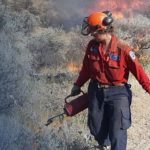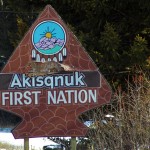Home »

Mandatory watercraft and rec gear self-inspection time
In effect June 17 in Kootenay and Yoho national parks
Parks Canada continues to prevent the spread of aquatic invasive species from entering and spreading in Yoho and Kootenay national parks.
This is the third-year self-inspection procedures have been mandatory in Yoho and Kootenay national parks for the use of watercraft and recreational gear (canoes, kayaks, stand-up paddle boards, fishing gear) in all waterbodies.
 Visitors and residents must inspect their watercraft, and complete and carry a self-certification permit before entering any body of water in these parks. Self-certification permits are available at popular locations and on the Parks Canada website. They are valid only for the date and waterbody indicated on the permit.
Visitors and residents must inspect their watercraft, and complete and carry a self-certification permit before entering any body of water in these parks. Self-certification permits are available at popular locations and on the Parks Canada website. They are valid only for the date and waterbody indicated on the permit.
A new self-certification permit is required if relocating to a new body of water.
All visitors and residents are required to:
- Clean all mud, sand, plant and animal materials from their boats, stand-up paddle boards and fishing gear.
- Drain coolers, buckets, compartments, and other items that may hold water.
- Dry all watercraft, stand up paddleboards and any aquatic recreational equipment completely and for 48 hours before entering any river, lake or stream.
Or dry for a minimum of 30 days after being used in the United States or provinces other than British Columbia, Alberta, Yukon and/or the Northwest Territories before entering any river, lake or stream.
Or decontaminate your watercraft at a provincial inspection station when unable to meet the Clean Drain Dry standards. Retain proof of the process, and complete and carry a self-certification permit.
Aquatic invasive species are spread by contaminated watercraft and recreational gear. You can protect lakes, rivers and streams by following Clean, Drain, Dry, and completing a mandatory self-certification permit.
Clean Drain Dry is a best practice across North America. It prevents the spread of aquatic invasive species such as whirling disease and invasive mussels which can:
- alter aquatic ecosystems;
- cause irreversible damage;
- impact vulnerable species at risk, like westslope cutthroat trout; and
- damage watercraft and gear.
Please follow local guidelines for areas outside of Yoho and Kootenay national parks to help stop the spread of aquatic invasive species.
Contact Parks Canada for self-certification permits.
Parks Canada photos
Lake Louise, Yoho and Kootenay Field Unit, Parks Canada







